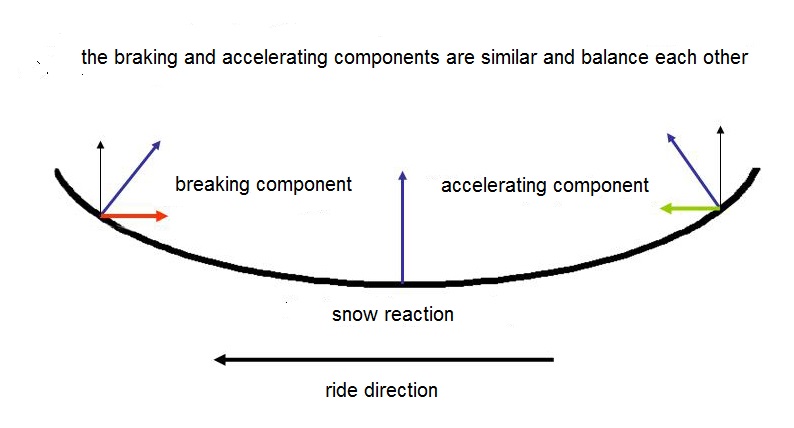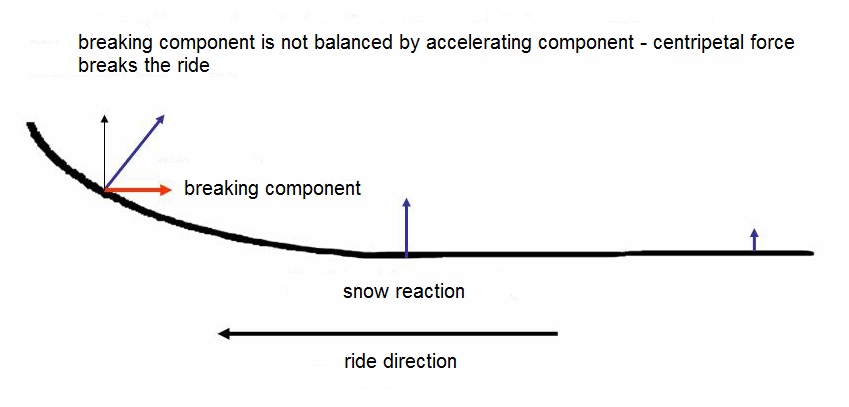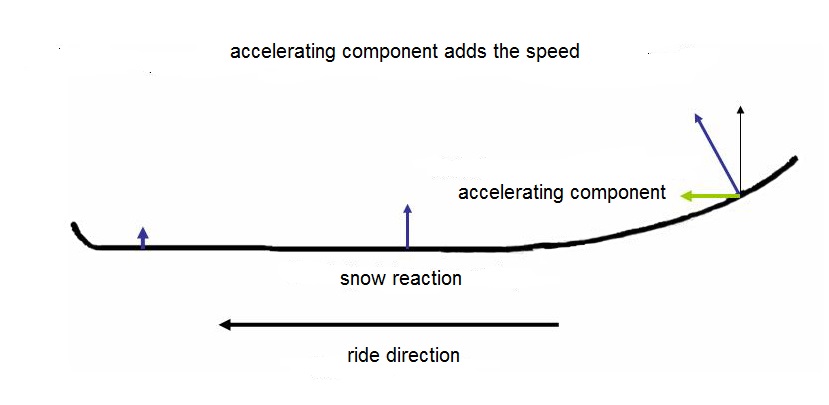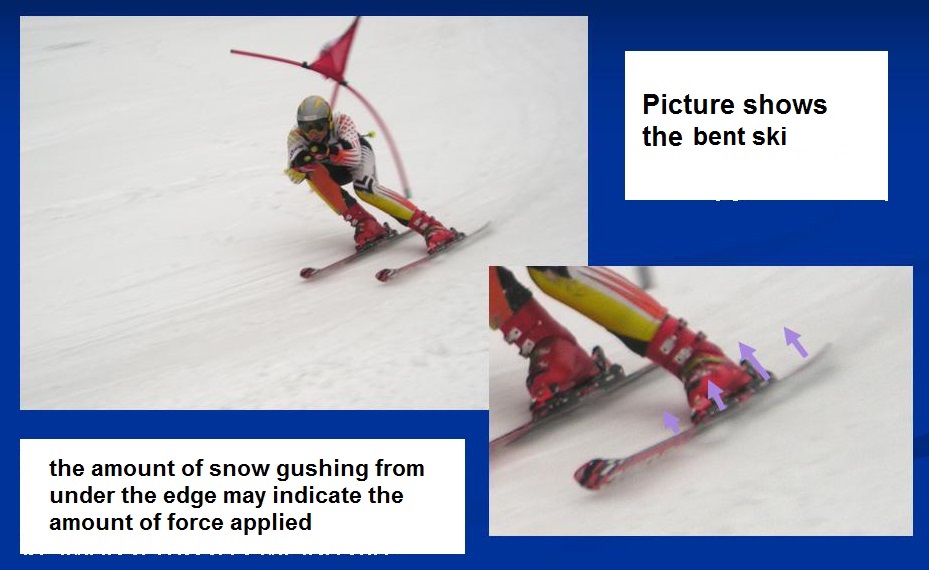under the influence of centripetal force the skis bend in an arc
During the turn centrifugal force acts on the skier. To balance it, the skier puts the ski on the sharp edge, which cuts into snow and ice. The centripetal force that balances the resulting centrifugal one, flows from there. The skis put in a turn, bend in an arc. Cutting into snow and ice, the ski curve marks the course. Tensioning the firing arc from which arrows are fired is the storage of energy in it, which is released when the tensile force stops working. Then, the accumulated energy is transmitted to the arrow. Referring this mechanism to a ski moving in a bend and curving, we can see that our ski-bow is bent by centripetal force. It is always generated when the skier moves on a curved track. A bent ski, like the archer’s bow, stores energy. It is a matter of the skier-competitor that the release of this energy accelerates and does not stop the ride. Let’s consider which forces bending the ski can inhibit, which will accelerate it, and which will be neutral for its movement and speed.
3.1. The skier loads the ski evenly
The pressure, and hence the reaction of the ground, is spread over the entire ski. The center of the ski is loaded the most heavily. The tip and tale are loaded symmetrically. The forces of this pressure are shown in the figure by blue vectors. Let’s create a system of components of each of these vectors in which one of them works in the direction of travel (red and green vectors). This component will accelerate or brake the skier. We notice that the components of the pressure of forces acting on the tip of the ski slow, and the components of the forces acting on the tale of the ski accelerate. The pressure inside the ski has neither braking nor accelerating components. The symmetrical load of the ski causes the braking components (red vector) to balance with the accelerating components (green vector).

It can be seen that with such a symmetrical and balanced load, the skier experiences neither additional acceleration nor braking. Such a load is neutral for him.
3.2. The skier in turn “hangs on the tips”
When the skier is leaning forward and presses hard on the tongues of the ski boots, the front of the skis are heavily loaded. The rear part of the ski (tale) is not loaded, so the ground (snow and ice) does not give it a reaction and does not bend it. This part of the ski does not go along the track cut over the edge. The figure 2. shows the pressure components acting in the line (direction) of travel. The pressure on the bent part of the ski has no such component (middle and rear part). Pressure on the tops generates a braking component. This way of pressing and bending the ski brakes.

If the pressure on the ski is not as shifted forward as the drawing suggests and the tale of the ski is slightly bent, the braking component on the tip balances the corresponding accelerating component from the rear of the ski. It is important that with a greater than neutral load on the tips, the sum of the braking components is greater than the sum of the accelerating components, so the ski is subjected to braking.
3.3. The skier turns and bends the ski tales
The ski tips are unloaded and all the pressure is shifted to the rear. The legs, and in particular the thighs of the skier, are extremely tense, focused on maintaining this very unstable balance. Any additional overload may result in its loss. A slight deepening of this system and accidental even greater deviation may cause a fall on the back, especially when the competitor is riding short slalom skis. However, this situation has a great advantage – the bent back of the ski generates an accelerating component (green vector). An unloaded tip does not cause braking components, while the bent tail of the ski generates accelerating components.

As in the previously described model of skis bent from the tip, with less decisive loading on the back of the ski, the advantage of accelerating phenomena occurs when the back is bent more than the ski tip.
3.4. When the skier knows that he is putting more weight on the tip or back of the ski
An indicator here may be pressing on the tongues or uppers of ski boots. Going “on the tips” requires less strength, but riding “on the back” is a huge load, especially on the thigh muscles. Therefore, sometimes naturally, the silhouette of a less trained or tired skier tilts forward, and shins put pressure on the tongues of shoes. Certainly, a balanced silhouette, in which the ski is loaded inside, is the most stable, natural, and at the same time it saves strength. Let’s not forget that the main element that gives the skier speed is the force of gravity and it essentially determines his ride time. This also causes the greatest overloads and difficulties, which skier must respond to, and must spend the most energy on “fighting” with it. The phenomenon we are currently analyzing, the influence of forces originating from the centripetal force, is only the “younger brother” of skier main drive. The others, more advanced ways to test your ski load are video and photo analysis. Let’s watch the bending of the ski, but first of all we look at the amount of ice and snow dust gushing from under the edge. Higher load, as well as the steepness of the slope cause that the heavily edged ski, despite its flexibility and damping properties, vibrates and at least slightly slides. It ejects snow and ice dust from underneath, which during analysis can be clearly seen on the TV screen or computer.

Another way to develop a skier balance is to ride on very short skis, not much longer than a ski boot, called a “snow blade”. Because they are so short, they do not tolerate any front-back deviations, simply threatening to fall backwards or onto the nose.